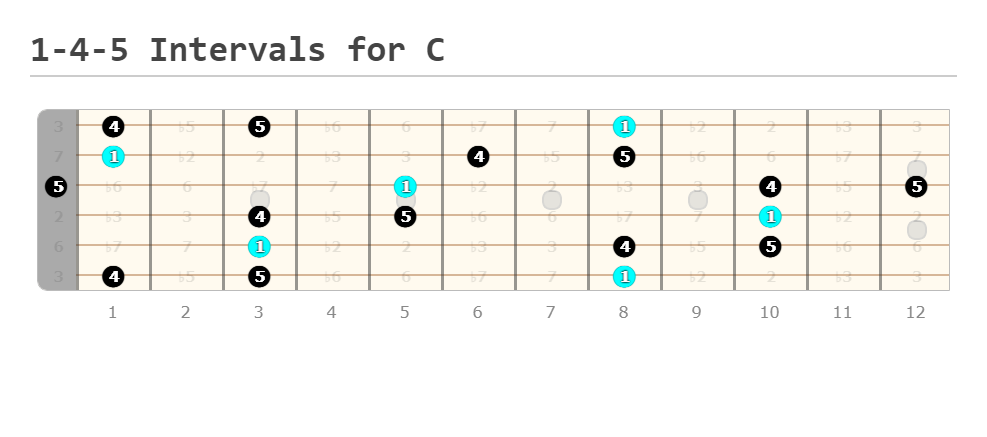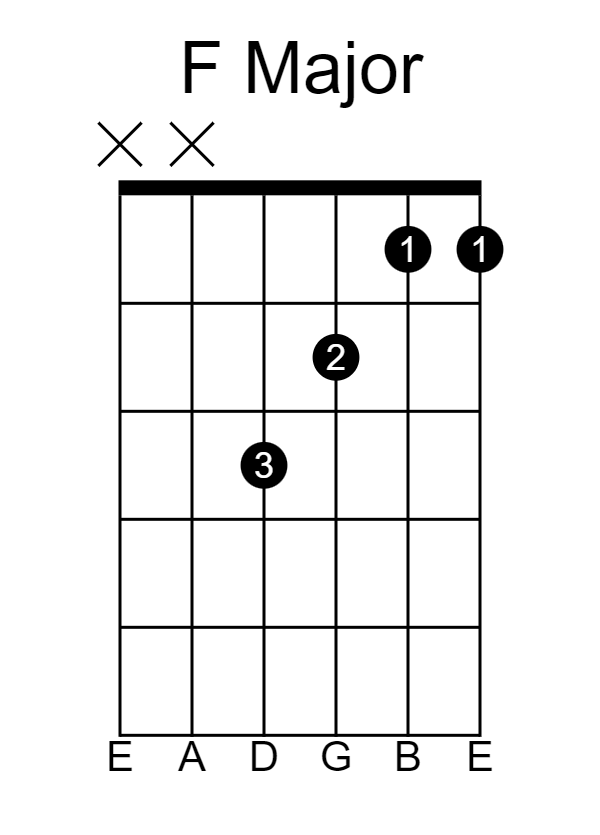You probably heard the term “1 4 5” somewhere, and that brought you here.
Luckily it’s extremely simple to understand, and when understood correctly can be a great theoretical tool for composing and communicating about chord progressions with other musicians or guitarists. So…
If you’ve been asking yourself ‘what is the 1-4-5 chord progression?”, then this lesson is for you.
1-4-5 Chord Progression Video
Here’s my YouTube video lesson that accompanies this chord progression lesson.
Understanding the 1-4-5 Chord Progression
The 1-4-5 chord progression is commonly used in all popular styles of music. No matter what style you play, understanding it will benefit you.
What is a 1-4-5 Chord Progression?
A 1-4-5 chord progression is made from the 1st, 4th, and 5th chords found diatonically in a major scale.
1, 4, and 5 are depicted using roman numerals.
The numerals are capitalized when they’re major chords, which gives you I, IV, and V.
The numerals are lowercase when they’re minor chords, which gives you i, iv, and v.
What is a 1 chord, 4 chord, and 5 chord?
The 1 chord, 4 chord, and 5 chord found in any major scale are major chords.
For example the C major scale contains the following notes: C-D-E-F-G-A-B
The 1st, 4th, and 5th notes are C, F, and G. When stacked in 3rds these become major chords.
C Major Chord
C
E
G
F Major Chord
F
A
C
G Major Chord
G
B
D
This means that the 1st,4th, and 5th chords in the C Major scale are C Major, F Major, and G Major.
When you play these chords in succession, you get a 1-4-5 progression.
How to find a 1, 4, and 5 on guitar
Identify your root interval, in this case C (1).
From there, using the A string for reference, you can see that a 4th interval is found directly beneath C, which is your root note (1), and a 5th interval is found directly above C.
A 5th interval is a whole step ahead of a 4th interval, which means a 4th interval is a whole step behind a 5th interval.
With all of this in mind, you can locate the 1,4, and 5 for any root note.

Identifying the 1,4, and 5 is relatively easy for any set of strings, except for the G to B string-set. When moving from the 1 on G to the 4 on B, you’ll need to move up one extra fret, rather than moving to the adjacent fret, like every other set of 2 strings.
How to play a 1-4-5 chord progression on guitar
Now that you understand what a 1-4-5 is, and how to find the 1st, 4th, and 5th intervals, let’s put them into practice. You’ll do this by playing three of the most popular 1-4-5 progressions on the guitar.
1-4-5 progression in C Major
The 1-4-5 progression in the C Major scale is C Major, F Major, and G Major.



1-4-5 progression in D Major
The 1-4-5 progression in the D Major scale is D Major, G Major, and A Major.



1-4-5 progression in G Major
The 1-4-5 progression in the G Major scale is G Major, C Major, and D Major.



Summary: 1-4-5 chord progression on guitar
To summarize, you can play a 1-4-5 chord progression by finding the 1st, 4th, and 5th chords in any major scale.
Start by identifying the 1 chord, then locating the 4th and 5th intervals on the strings above or beneath the root.
As you start to practice songs that use the 1-4-5 progression on guitar, you’ll start to recognize popular positions and chord shapes for the progression.
For your next step, I suggest learning major scales. Here are some resources to help with that.



